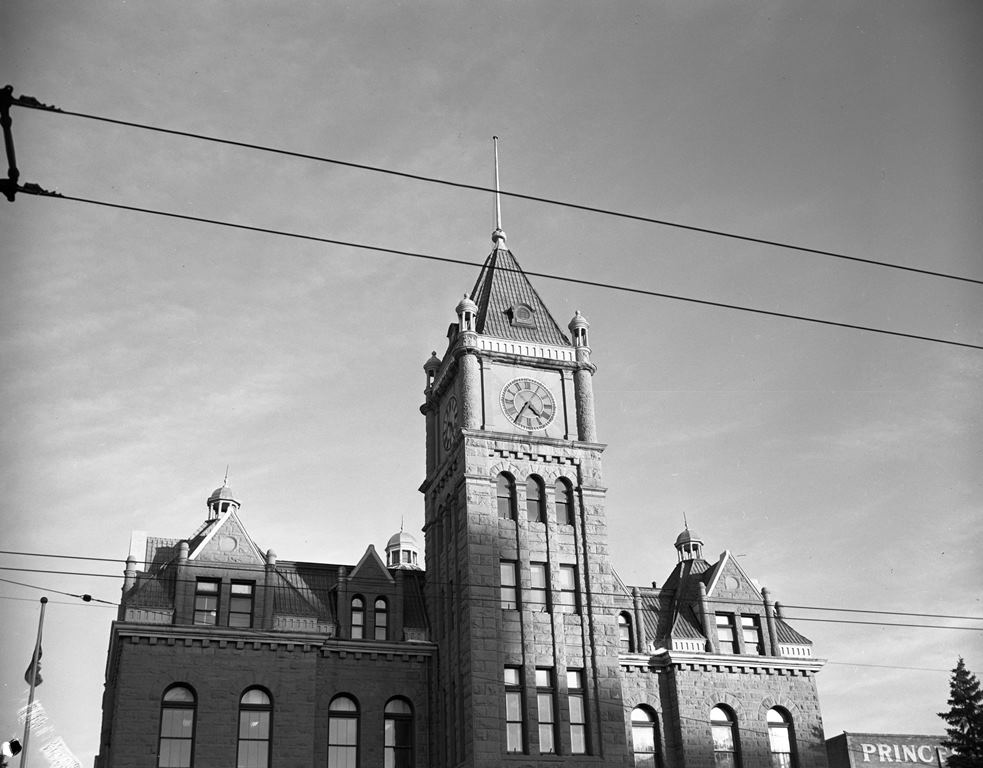When Calgary became a municipality in 1884, there was no city clock. Retired Northwest Mounted Police officer James H. Walker fired a cannon at noon every day so people could orient themselves in time. Only the chosen ones had their own watches. Therefore, when the plan for the new town hall was being developed in 1907, they decided to place a public clock on the building. Read more about how it happened at calgary-future.
Design and construction of the city hall
Architect William M. Dodd designed the five-story sandstone tower. The central element of the design was an illuminated clock. During the first year of construction, it was found that the costs exceeded the original plans, so constructors wanted to abandon the construction continue.
In April 1909, the city government offered to allocate additional funds, but the taxpayers opposed it. A public scandal arose, as a result of which the architect Dodd was fired, and the contractor himself resigned. The town hall stood unfinished for almost a year. In the end, Calgarians approved the allocation of funds for the town hall, and already in the spring of 1910, construction resumed.
Clock installation
In the same year 1910, the city concluded a contract with the jewelry firm D.E. Black to install the clock and maintain it for five years. The firm chose the latest model for the town hall, made by the Seth Thomas Clock Company, which created many tower clocks for cities in Canada and the United States, and also supplied clocks to the Canadian Pacific Railway (CPR).
Calgary’s new Town Council opened its doors on January 2, 1911, and four days later a giant clock with four dials and a bell weighing 1,500 pounds arrived in the city. It was installed by Rudolph Engle, an employee of the jewelry firm.

Several repairs
The clock was eventually synchronized with the CPR railway time, and for the next few decades it ran uninterrupted with a half-hour advance every week. However, in May 1955, the clock stopped. Mayor Donald H. McKay estimated that the repairs would not be profitable. Besides, the sandstone tower itself was already in terrible shape, requiring at least the top twenty feet to be removed. Nevertheless, the city council approved the repair, so the old tower with the chronometer was preserved.
From 1911 to 1979, the clock ran almost continuously, although it moved the hands forward by 5 minutes every month. However, after 1979, it began to decline. Due to rotting bolts and old gears, there was a serious risk that the huge metal clock could fall at any moment. Therefore, in the spring of 1984, a second overhaul of the timepiece was carried out, and after three months of maintenance, the shining clock ticked again.
Further repairs were carried out in 1995, when it stopped again, and in November 2010, when the flywheel shaft was repaired. In 2022, the clock stopped showing the exact time again. Calgary Facilities Management Executive Advisor Gillian Henderson explained that the cause of the problem is partly a mystery. In general, this watch needs to be wound twice a week with a hand crank. It is the only clock of its kind left in Canada. If its maintenance in 1911 cost the city $3,500, then in 2022 it will cost $125,000.
To honor the people who have maintained the clock over the years, the room with it has been painted with their names and initials. City Hall itself, in the era of digital clocks and cell phones, reflects the city’s phenomenal growth since 1911, and the four-dial chronometer is a symbol of Calgary’s municipal administration. The building is recognized as a National Historic Site of Canada, Alberta Historic Landmark and Municipal Historic Landmark.


